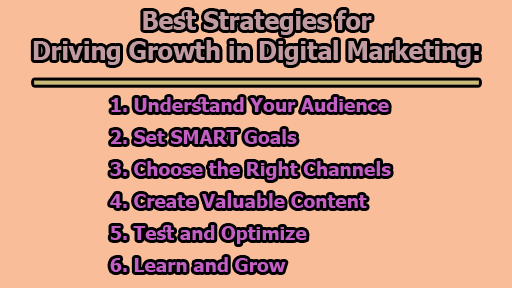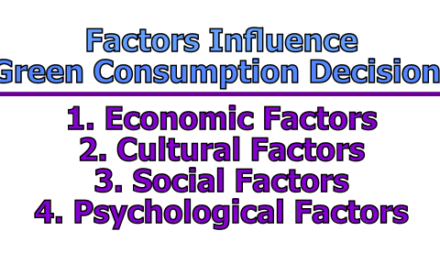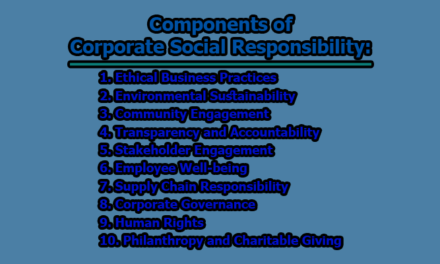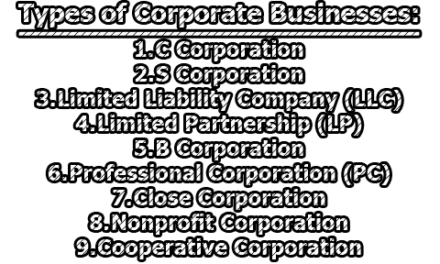Best Strategies for Driving Growth in Digital Marketing:
Digital marketing is a dynamic and fiercely competitive field that demands constant innovation and adaptability. To thrive in this ever-evolving landscape, businesses and organizations need a well-defined digital marketing strategy that can drive growth and set them apart from the competition. In this article, we will explore some of the best strategies for driving growth in digital marketing.
1. Understand Your Audience: The foundation of any successful digital marketing strategy is a deep understanding of your target audience. To effectively connect with your audience, you must know who they are, what they need, their preferences, pain points, and motivations. Research tools like surveys, interviews, analytics, personas, and customer journeys can provide invaluable insights into your audience’s behavior and expectations.
By gaining a comprehensive understanding of your audience, you can tailor your content, messaging, channels, and offers to align with their interests and needs. This personalization is essential for forging meaningful connections and driving growth in digital marketing.
2. Set SMART Goals: The second step in crafting a successful digital marketing strategy is to establish SMART goals—Specific, Measurable, Achievable, Relevant, and Time-bound. Your goals should be crystal clear, quantifiable, realistic, in harmony with your business objectives, and come with a deadline. For instance, rather than a vague objective like “I want to increase website traffic,” a SMART goal would be “I want to increase website traffic by 20% in the next three months.”
SMART goals enable you to monitor your progress, assess your performance, and make necessary adjustments to your strategy. They provide a framework for strategic planning, ensuring your efforts are focused on the most critical outcomes.
3. Choose the Right Channels: Selecting the right channels for your audience and goals is the third crucial step in a successful digital marketing strategy. Various digital marketing channels are at your disposal, such as email, social media, search engines, blogs, podcasts, videos, webinars, and more. Each channel has its unique advantages, disadvantages, costs, and best practices.
To determine the optimal channels for your strategy, consider factors like your audience’s preferences, content type, budget, and desired outcomes. Moreover, integrating your selected channels creates a consistent and seamless customer experience across all touchpoints, reinforcing your brand’s identity.
4. Create Valuable Content: The fourth pillar of a prosperous digital marketing strategy is the creation of valuable content. Content serves as the linchpin of digital marketing, captivating, engaging, educating, and converting your prospects and customers. Your content should be relevant, informative, entertaining, and persuasive. It should also be optimized for search engines, social media, and mobile devices.
Utilize various content formats and styles, such as text, images, audio, video, infographics, ebooks, case studies, and testimonials. Regularly updating and repurposing your content ensures that it remains fresh and pertinent, keeping your audience engaged.
5. Test and Optimize: The fifth step for a successful digital marketing strategy involves continuous testing and optimization of your campaigns and activities. This is crucial for improving results and maximizing your return on investment. Utilize various tools and techniques to measure and analyze your data, including Google Analytics, Google Search Console, Google Ads, and more.
Incorporate methods like A/B testing, multivariate testing, and split testing to compare different versions of your content, design, layout, headlines, and calls to action. The insights gained from these tests help you make data-driven decisions and refine your strategy, ensuring that it remains effective and efficient.
6. Learn and Grow: The final step in creating a successful digital marketing strategy is an ongoing commitment to learning and growth. Digital marketing is a constantly evolving field, with new trends, technologies, tools, and best practices emerging regularly. It’s imperative to stay updated on industry developments and maintain a watchful eye on your competitors, industry, and market conditions to identify new opportunities and challenges.
Seeking feedback from your audience, customers, partners, and peers provides valuable insights and suggestions that can further refine your strategy. By embracing a culture of continuous learning and growth, you can remain at the forefront of the digital marketing landscape and consistently drive growth.
In conclusion, digital marketing offers immense opportunities for businesses and organizations to thrive in the digital age. By following these six fundamental steps – understanding your audience, setting SMART goals, choosing the right channels, creating valuable content, testing and optimizing, and embracing continuous learning and growth – you can build a robust digital marketing strategy that propels your growth and sets you apart in this dynamic and competitive field. Success in digital marketing comes to those who are strategic, adaptable and committed to delivering value to their audience.

Assistant Teacher at Zinzira Pir Mohammad Pilot School and College










